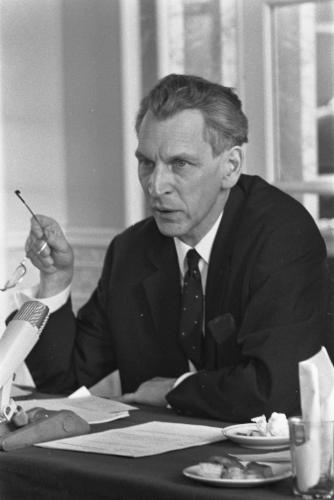Spes Patriae Sinfonietta voor klein symfonie-orkest op. 62
By Marius Flothuis
Details
Spes Patriae Sinfonietta for small symphony orchestra
Allegro con spirito
Passacaglia con intermezzi (Andante tranquillo)
Allegro vivace e impetuoso
Commissioned by the Nederlands Studenten Orkest
With support from the Prins Bernhard Fonds
Program note: The purpose for which the work was written imposed a certain restriction on me as regards the forces used and the duration; for the rest, I was, however, completely free.
The work is written for double woodwind, two horns, two trumpets, timpani, percussion and strings.
The title "Spes Patriae" seemed to me significant for a piece to be played by students of our universities. In each of the three movements the accent focuses, in each case, on a different aspect of music. In the first, it is on harmony, in the second on melody and in the third on rhythm. It should however be noted that the melodic element is by no means neglected in the first and third movements. If I were to give a characteristication of each of the three movements, it would be: I: passionate - energetic, II: introspective, III: exuberant.
The first movement is in five sections which can be represented schematically as a - b - a' - c - a". The intermezzo b gives the woodwind an opportunity for solo work, while c is largely entrusted to the strings.
The second movement is a Passacaglia with two intermezzi and is therefore also in five sections. The intermezzi are entrusted to the woodwind and brass respectively. Those who are good at counting will notice that the basic theme of the passacaglia is a twelve-tone melody. Apart from this, there is no reason for anxiety; since the tonal centre of this piece is D, that of the first and third movements is E flat.
The third movement is in three sections. The central section is in 10/8 time (3 + 4 + 3), the first and third sections are in 14/8 time (3 + 4 + 4 + 3). - MARIUS FLOTHUIS
Amsterdam

